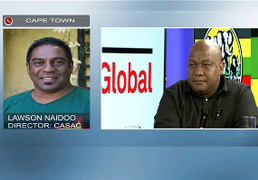THOUSANDS of South Africans and foreign visitors paused at the open casket of former president Nelson Mandela on Wednesday to say emotional farewells as he lay in state at the Union Buildings in Pretoria.
From early in the day, crowds of people had gathered on the lawns, many wearing the black, green and gold colours of the African National Congress (ANC).
The Mandela family and fellow liberation leaders were the first to pay their respects after the coffin — in which his body was dressed in one of his trademark Madiba shirts in black and gold — had been carried up the steps of the government seat by eight military officers.
His widow, Graca Machel, stood silently next to the coffin, her head bowed, before former presidents Thabo Mbeki and FW de Klerk and past and present Cabinet ministers filed by.
Mr de Klerk’s wife, Elita, dabbed away tears, as did Mandela’s personal assistant of 18 years, Zelda la Grange, who clutched the hand of U2 singer Bono as she made her way to the casket.
Former Zambian president Kenneth Kaunda was part of a contingent of African dignitaries that included Zimbabwean President Robert Mugabe, Nigeria’s Goodluck Jonathan and Liberia’s Ellen Johnson Sirleaf.
Mandela’s casket arrived at the Union Buildings after a public procession from 1 Military Hospital through streets lined with military personnel and members of the public.
Some sang, while others stopped briefly on their way to work to catch a glimpse of the glass-topped hearse carrying his remains to the same place where he set out his vision of a united "rainbow" nation nearly 20 years ago, when he was sworn in as president.
At the corner of Stanza Bopape and Hamilton streets, a block away from the Union Buildings, hawkers sold ANC merchandise and T-shirts bearing Mandela’s face.
On Tuesday, President Jacob Zuma announced that the Union Buildings amphitheatre would be named after Mandela, adding another Pretoria landmark that recalls his legacy.
On Wednesday morning, his funeral cortege passed several sites that spoke of key moments in his political journey that saw US President Barack Obama compare him to Mahatma Gandhi and Martin Luther King this week.
The hearse, led by motorcycle outriders, was taken past Pretoria Central Prison, where Mandela was held in 1962 for incitement and leaving South Africa illegally. It also passed the North Gauteng High Court, where Mandela stood trial for treason and sabotage and made his now legendary pledge, in April 1964, that he was prepared to die for the ideal of a non-racial society.
It also passed close to the Medi-Clinic Heart Hospital, in the capital, where Mandela spent three months earlier this year while well-wishers kept up a constant vigil outside the gates.
Wednesday’s scenes of quiet mourning contrasted sharply with the rain-soaked, noisy official memorial for Mandela in Soweto the day before, where Mr Obama led foreign tributes with a eulogy that hailed the liberation hero as a "giant of history".
The memorial at times saw political drama overshadow the proceedings. Mr Zuma was loudly heckled by the crowd, in contrast to cheers that went up for Mr Obama, Mr Mbeki and Mr de Klerk.
The Mandela family said on Wednesday they were humbled by the thousands of people who had braved terrible weather to attend the memorial service.
"As the Mandela family, we take this opportunity today to extend our gratitude to those who honoured Madiba with their presence during the national memorial service."
Mandela, whose body is lying in state in Pretoria for three days, will be laid to rest in his boyhood rural home of Qunu in the Eastern Cape on Sunday.
"It is our conviction that on this last mile, this nation will pull together and bid farewell in the most dignified and disciplined manner possible that Madiba would have expected of us," the family said.
Cape Town celebrates Mandela’s life
Meanwhile, thousands of people from across the Western Cape flocked to Cape Town on Wednesday for an official memorial event to celebrate the life of Mandela.
About 53,000 people were expected to pack the Cape Town Stadium after free tickets were snapped up in a day. The queues at the stadium gates started growing well before the event started at 4pm.
Many die-hard ANC supporters, who had travelled from deep rural areas of the province, entered the gates singing struggle songs and dancing in circles.
Scottish singer and political activist Annie Lennox confirmed her attendance at the last minute, joining other big names on stage, including Ladysmith Black Mambazo, Johnny Clegg and Freshlyground.
Loud cheers erupted when former Springbok captain Francois Pienaar made his appearance.
He said Mandela had been a "spiritual coach and captain" to sportsmen and -women.
"In 1967 I was born into apartheid ... 27 years later, as the fortunate leader of the Springboks, I had the opportunity to meet the father of the nation. My life changed forever," he said.
Pienaar spoke about the ability sport had to bring change to people’s lives, and recalled how Mandela had recognised this.
"Armed with these lessons, Madiba urged his comrades to keep the Springbok emblem," he said of the symbol that to many represented a divided sporting community.
"We became one team, playing to one country," Pienaar said, prompting more loud cheers from the crowd.
Speaking of the Springboks’ 1995 Rugby World Cup victory, he said: "For the first time we were world champions together."
Sapa-AFP, Sapa, with Setumo Stone and Khulekani Magubane
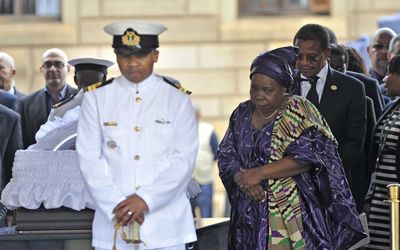
AU Commission chairwoman Nkosazana Dlamini-Zuma, a former South African Cabinet minister, next to the casket of Nelson Mandela at the Union Buildings on Wednesday. Picture: GCIS
THOUSANDS of South Africans and foreign visitors paused at the open casket of former president Nelson Mandela on Wednesday to say emotional farewells as he lay in state at the Union Buildings in Pretoria.
From early in the day, crowds of people had gathered on the lawns, many wearing the black, green and gold colours of the African National Congress (ANC).
The Mandela family and fellow liberation leaders were the first to pay their respects after the coffin — in which his body was dressed in one of his trademark Madiba shirts in black and gold — had been carried up the steps of the government seat by eight military officers.
His widow, Graca Machel, stood silently next to the coffin, her head bowed, before former presidents Thabo Mbeki and FW de Klerk and past and present Cabinet ministers filed by.
Mr de Klerk’s wife, Elita, dabbed away tears, as did Mandela’s personal assistant of 18 years, Zelda la Grange, who clutched the hand of U2 singer Bono as she made her way to the casket.
Former Zambian president Kenneth Kaunda was part of a contingent of African dignitaries that included Zimbabwean President Robert Mugabe, Nigeria’s Goodluck Jonathan and Liberia’s Ellen Johnson Sirleaf.
Mandela’s casket arrived at the Union Buildings after a public procession from 1 Military Hospital through streets lined with military personnel and members of the public.
Some sang, while others stopped briefly on their way to work to catch a glimpse of the glass-topped hearse carrying his remains to the same place where he set out his vision of a united "rainbow" nation nearly 20 years ago, when he was sworn in as president.
At the corner of Stanza Bopape and Hamilton streets, a block away from the Union Buildings, hawkers sold ANC merchandise and T-shirts bearing Mandela’s face.
On Tuesday, President Jacob Zuma announced that the Union Buildings amphitheatre would be named after Mandela, adding another Pretoria landmark that recalls his legacy.
On Wednesday morning, his funeral cortege passed several sites that spoke of key moments in his political journey that saw US President Barack Obama compare him to Mahatma Gandhi and Martin Luther King this week.
The hearse, led by motorcycle outriders, was taken past Pretoria Central Prison, where Mandela was held in 1962 for incitement and leaving South Africa illegally. It also passed the North Gauteng High Court, where Mandela stood trial for treason and sabotage and made his now legendary pledge, in April 1964, that he was prepared to die for the ideal of a non-racial society.
It also passed close to the Medi-Clinic Heart Hospital, in the capital, where Mandela spent three months earlier this year while well-wishers kept up a constant vigil outside the gates.
Wednesday’s scenes of quiet mourning contrasted sharply with the rain-soaked, noisy official memorial for Mandela in Soweto the day before, where Mr Obama led foreign tributes with a eulogy that hailed the liberation hero as a "giant of history".
The memorial at times saw political drama overshadow the proceedings. Mr Zuma was loudly heckled by the crowd, in contrast to cheers that went up for Mr Obama, Mr Mbeki and Mr de Klerk.
The Mandela family said on Wednesday they were humbled by the thousands of people who had braved terrible weather to attend the memorial service.
"As the Mandela family, we take this opportunity today to extend our gratitude to those who honoured Madiba with their presence during the national memorial service."
Mandela, whose body is lying in state in Pretoria for three days, will be laid to rest in his boyhood rural home of Qunu in the Eastern Cape on Sunday.
"It is our conviction that on this last mile, this nation will pull together and bid farewell in the most dignified and disciplined manner possible that Madiba would have expected of us," the family said.
Cape Town celebrates Mandela’s life
Meanwhile, thousands of people from across the Western Cape flocked to Cape Town on Wednesday for an official memorial event to celebrate the life of Mandela.
About 53,000 people were expected to pack the Cape Town Stadium after free tickets were snapped up in a day. The queues at the stadium gates started growing well before the event started at 4pm.
Many die-hard ANC supporters, who had travelled from deep rural areas of the province, entered the gates singing struggle songs and dancing in circles.
Scottish singer and political activist Annie Lennox confirmed her attendance at the last minute, joining other big names on stage, including Ladysmith Black Mambazo, Johnny Clegg and Freshlyground.
Loud cheers erupted when former Springbok captain Francois Pienaar made his appearance.
He said Mandela had been a "spiritual coach and captain" to sportsmen and -women.
"In 1967 I was born into apartheid ... 27 years later, as the fortunate leader of the Springboks, I had the opportunity to meet the father of the nation. My life changed forever," he said.
Pienaar spoke about the ability sport had to bring change to people’s lives, and recalled how Mandela had recognised this.
"Armed with these lessons, Madiba urged his comrades to keep the Springbok emblem," he said of the symbol that to many represented a divided sporting community.
"We became one team, playing to one country," Pienaar said, prompting more loud cheers from the crowd.
Speaking of the Springboks’ 1995 Rugby World Cup victory, he said: "For the first time we were world champions together."
Sapa-AFP, Sapa, with Setumo Stone and Khulekani Magubane


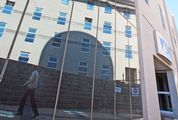
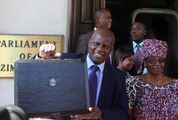
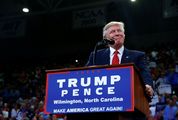
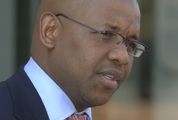




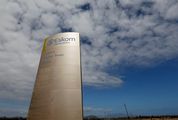
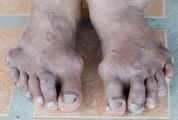
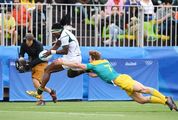
 News and views on the death, and life, of former president Nelson Mandela, with
tributes and photographs
News and views on the death, and life, of former president Nelson Mandela, with
tributes and photographs






